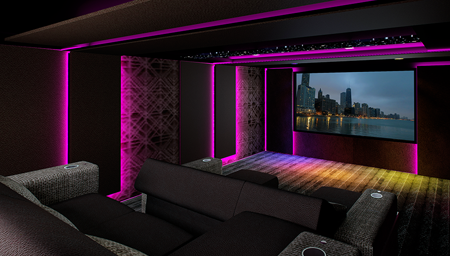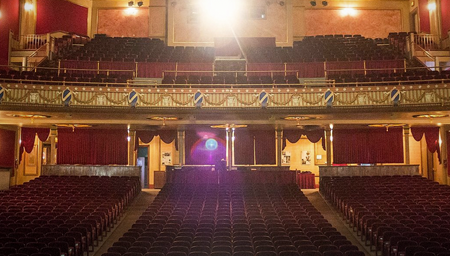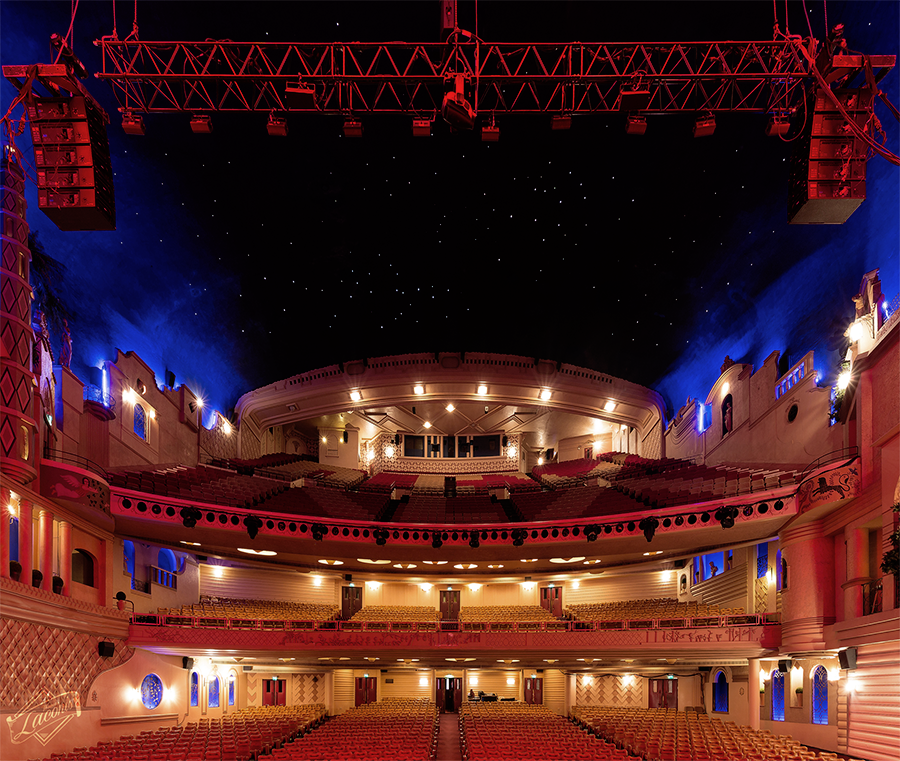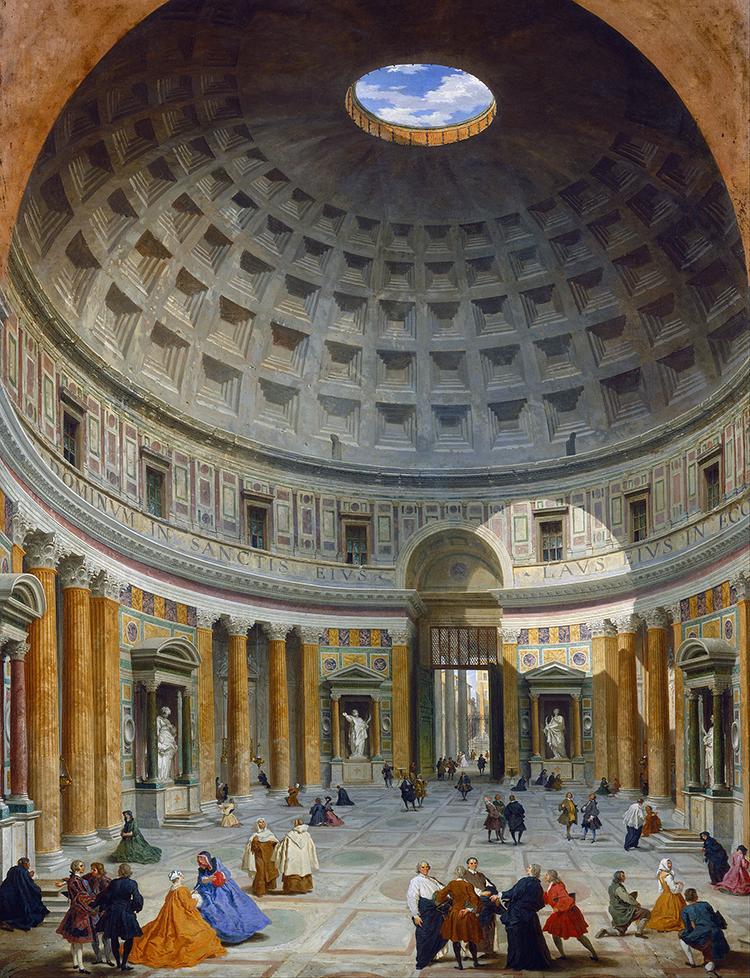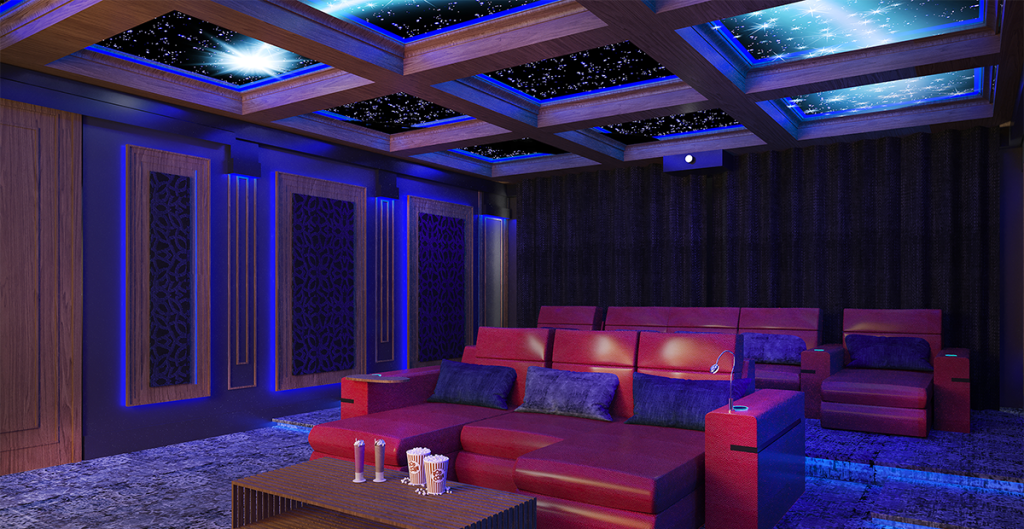
Deschamps on Design | Star Gazing
“Design your own universe and control everything from brightness to color to timing within a millisecond with the flick of an app”
more Deschamps on Design
Star ceilings have evolved from being the epitome of home theater kitsch to highly sophisticated, customizable, and tasteful additions to premium private viewing spaces
by Maria Deschamps
June 7, 2022
Fiber-optic ceilings were once so pervasive that they came to be seen as a tacky clichè and have long been out of favor in high-end home theaters. Overused and often just slapped on, they were, as home theater expert Theo Kalomirakis says, “the lazy man’s solution to ceiling design.” But star ceilings are coming back into favor with interior designers, thanks mainly to tremendous changes in the technology behind them.
Speaking from my own experience, most people planning a dedicated home theater now request a star ceiling. Perhaps it’s to counteract the claustrophobia of the COVID lockdown or maybe it’s because of the renewed interest in space travel. In any case, star gazing has always been cathartic. I think back to my first visit to Greece and seeing all the outdoor theaters, which took my breath away. According to Theo, people in Greece attend outdoor entertainments not so much because of the movie or spectacle that’s playing but because of the environment it’s being played in. Similarly, I often reminisce about my visit to the Pantheon in Rome and looking up into the beauty and majesty of its iconic dome with its open aperture at the top that looks directly out at the sky above.
When architect John Eberson started designing atmospheric movie palaces in the early 1920s, his concept was to bring the outdoors in. He started by simply painting clouds and stars on domed ceilings, which evolved into making the stars twinkle and using projection to give the impression the clouds were moving. It was entertaining just to be in his theaters and gaze up.
Star panels are the contemporary equivalent of that experience, consisting of thin strands of fiber-optic cable that carry light to each tiny star. The size, shape, and intensity of the light points determine the number of strands needed—anywhere from a few hundred to a few thousand.
As for what’s new in star ceilings, customizable panel sizes and shapes are just the beginning. No more being limited to fixed options, no more big control boxes (which were huge compared to the small, sleek 3.5″ x 5.5″ ones today), no more heat, and no more noise. How about showing your horoscope signs, your favorite planets,
The star ceiling in the Great Hall of the Grand Rex theater, Paris, designed by John Eberson
shooting stars, or the entire Milky Way? Place each item where you want and decide what color you want it to be. Design your own universe, and control everything from brightness to color to timing within a millisecond with the flick of an app.
Speaking with Epixsky, a leading producer of fiber-optic star panels, I discovered their business has expanded tremendously—partly because they now design ceilings for the medical sector as a way to calm patients during medical or dental procedures. Their latest development is airbrushing custom designs onto panels. In a luxury private cinema, adding something like a contemporary family crest could help make the ceiling design exclusive.
The latest star ceilings are functional as well as decorative. Not only do they house and support the strands that carry the light, they can also act as an acoustic panel to absorb sound—which is perfect for a home theater ceiling! The panels can also be customized to fit additional recessed lights or ceiling speakers. The fabric used to cover them is acoustically transparent so the sound of speakers hidden behind them can be clear and concise, and you can choose fabric from a variety of colors and textures.
You can’t just tack one of these panels onto your ceiling, though, and expect it look integrated into the design of the room. The details around the panels need to be meticulously attended to. Framing the ceiling with coves of indirect lights is one approach. Creating outlines with moldings or linear LED strip lights is another. Adding movement to the design—a twinkle here and a shooting star there—can be a really subtle touch, while at the same time ensuring that the ceiling remains decorative and not a distraction or the focus of attention.
Authenticity in design is very important to me. I prefer to use items made by artisan craftsmen, natural materials, and original art instead of mass-produced synthetic materials and lazy trompe l’oeils. But since it would be prohibitive at best to have an indoor theater where you can actually look up at the night sky or that recreates the Pantheon’s oculus, opting for a sophisticated, customized star ceiling can take you almost all the way there, lighting up your home cinema with your own private universe.
Maria Deschamps is a certified Interior Designer, IDC, NCIDQ, APDIQ and has been designing home theaters and media rooms since the year 2000. She also designs high-end residential, restaurant, and commercial spaces, and is a partner at TKG, the Theo Kalomirakis Group.
© 2025 Cineluxe LLC


